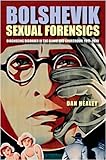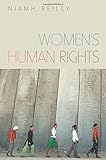Support H-Net | Buy Books Here | Help Support the NBN and NBN en Español on Patreon | Visit New Books Network en Español!
- African Studies
- African American Studies
- American Politics
- American Studies
- American South
- American West
- Asian American Studies
- Australian and New Zealand Studies
- British Studies
- Canadian Studies
- Caribbean Studies
- Central Asian Studies
- Chinese Studies
- East Asian Studies
- Eastern European Studies
- European Politics
- French Studies
- German Studies
- Iberian Studies
- India Studies
- Indian Ocean World
- Iranian Studies
- Irish Studies
- Israel Studies
- Italian Studies
- Japanese Studies
- Korean Studies
- Latino Studies
- Latin American Studies
- Mexican Studies
- Middle Eastern Studies
- Native American Studies
- Pacific Studies
- Polish Studies
- Russian and Eurasian Studies
- Southeast Asian Studies
- South Asian Studies
- Turkish Studies
- Ukrainian Studies
- Western European Studies
- World Affairs
- Animal Studies
- Anthropology
- Archaeology
- Business, Management, and Marketing
- Media
- Critical Theory
- Disability Studies
- Drugs, Addiction and Recovery
- Education
- Economics
- Finance
- Geography
- Gender Studies
- Genocide Studies
- Higher Education
- Human Rights
- Journalism
- Language
- Law
- LGBTQ+ Studies
- National Security
- Philanthropy
- Philosophy
- Policing, Incarceration, and Reform
- Political Science
- Politics & Polemics
- Public Policy
- Sex, Sexuality, and Sex Work
- Sociology
- Sound Studies
- Sports
- Urban Studies
- Big Ideas
- Celebration Studies
- Co-Authored
- Cover Story
- Historical Materialism
- History Ex Silo
- Interpretive Political and Social Science
- Invested Investor
- Landscape Architecture
- Late Antiquity
- Mormonism
- NBN Book of the Day
- NBN Seminar
- Postscript: Conversations on Politics and Political Science
- Practical History
- Preparing for Life After Grad School
- Psychology and Climate Change
- Syriac Studies
- The Chair: In The Room at the Fed
- New Books with Miranda Melcher

Apr 27, 2012
Soviet Women in Combat
A History of Violence on the Eastern Front
Summary
We're all familiar with the film cliche of the little band of soldiers who in ordinary life never would have had met, but who learn to appreciate each other in the battles of World War II. All white, of course: African Americans would have to wait till the integration of the armed forces. But still, there's a kind of earnest 1940s diversity in those movies: maybe a wide-eyed kid from the farm, a privileged college boy, and a Jewish guy from Brooklyn. With some subplot about a faithful girlfriend, or maybe an unfaithful one, back home.
In the Red Army, the situation was a little different. There, the women were snipers, tank drivers, combat pilots, machine gunners, and the like: skilled purveyors of lethal violence, serving side by side with men (and sometimes above them, as their commanding officers). This was the first Soviet generation, educated in co-educational schools where everyone participated in paramilitary exercises and no one took home economics. When the long-awaited war with Germany came, women of this cohort took for granted that they would take up arms.
Anna Krylova's book, Soviet Women in Combat: A History of Violence on the Eastern Front (Cambridge University Press, 2010), tells their story. Drawing on diaries, memoirs, letters, oral histories, and state records, Krylova reveals a world in which neither men nor women considered the "woman soldier" to be an oxymoron. And she reveals how this history was thoroughly marginalized after the war.
Anna Krylova is associate professor of history at Duke University, and her book is the 2011 winner of the Herbert Baxter Adams Prize of the American Historical Association. It's a great read for anyone interested in the Second World War - and it's a thoughtful lesson in the possibilities for reimagining gender.






































































































